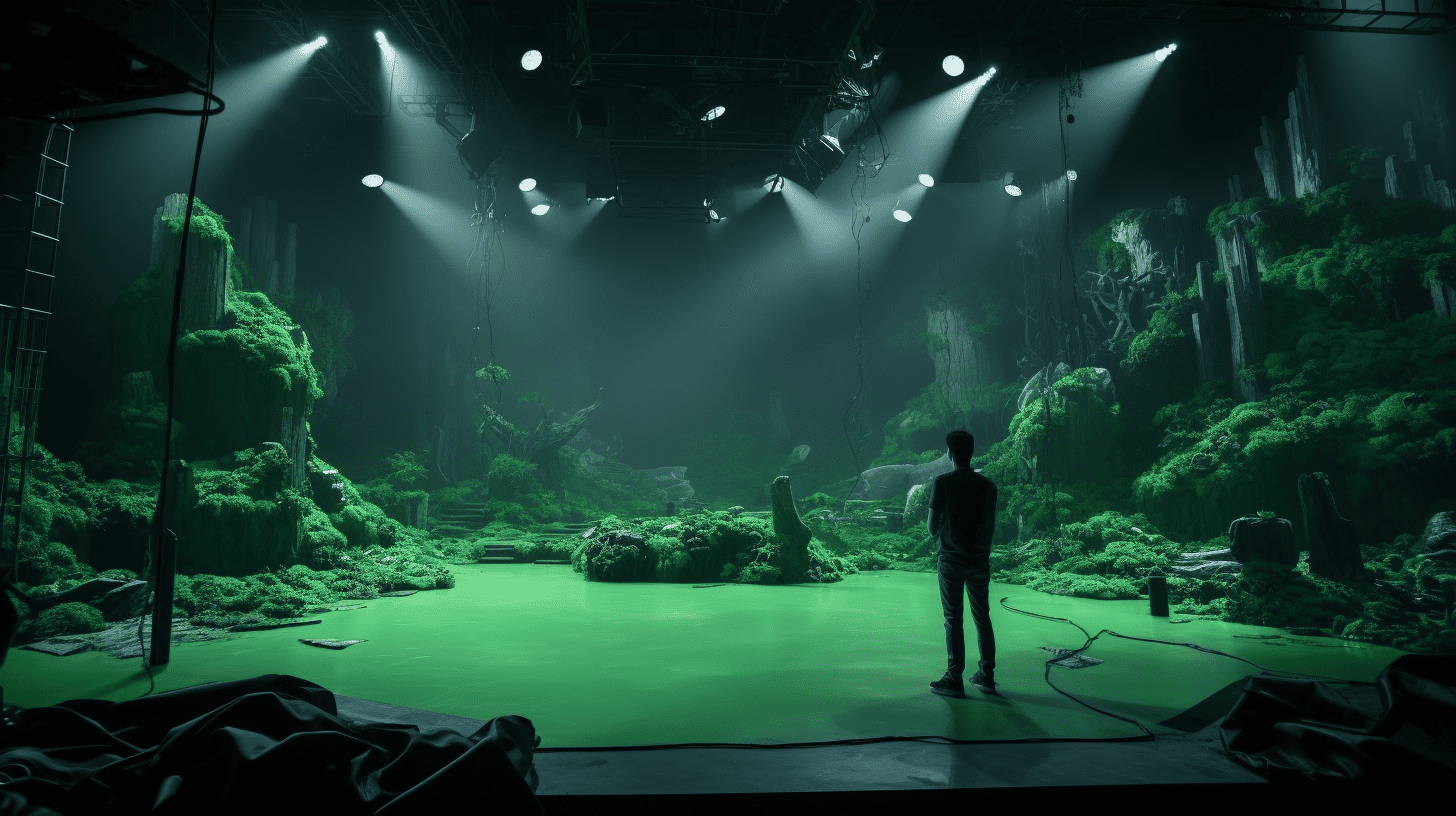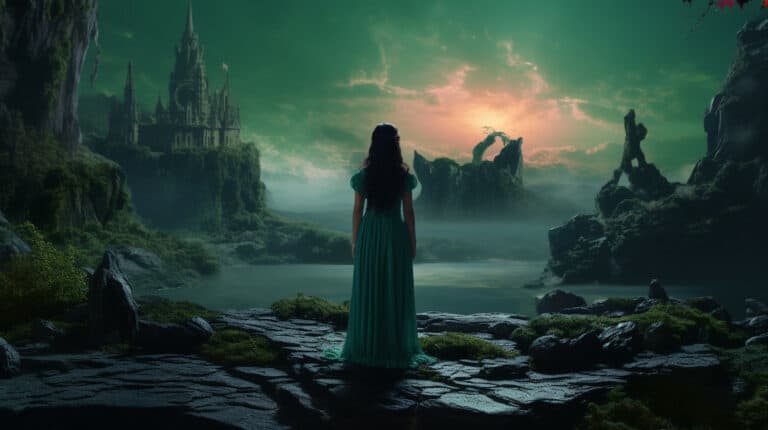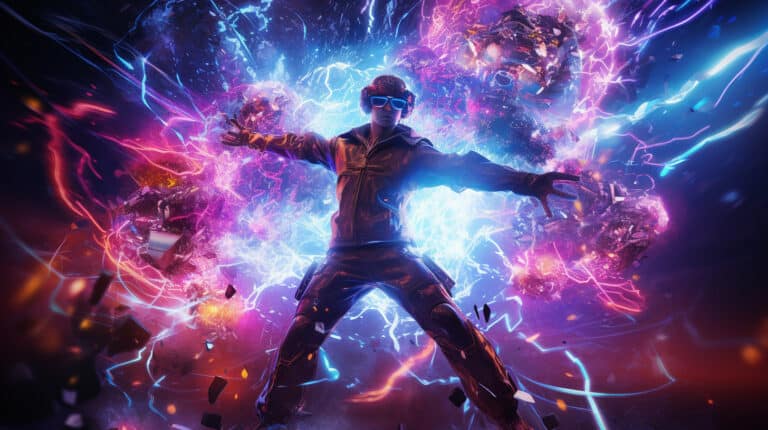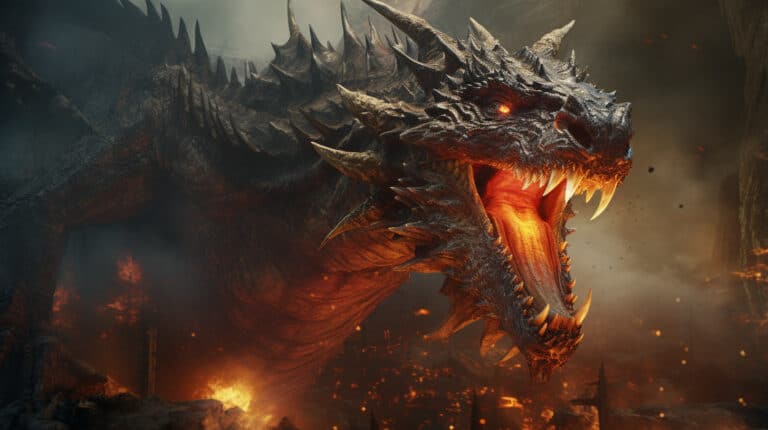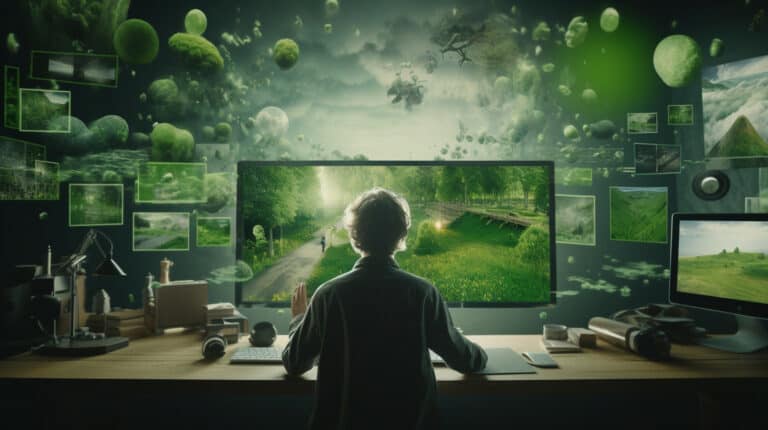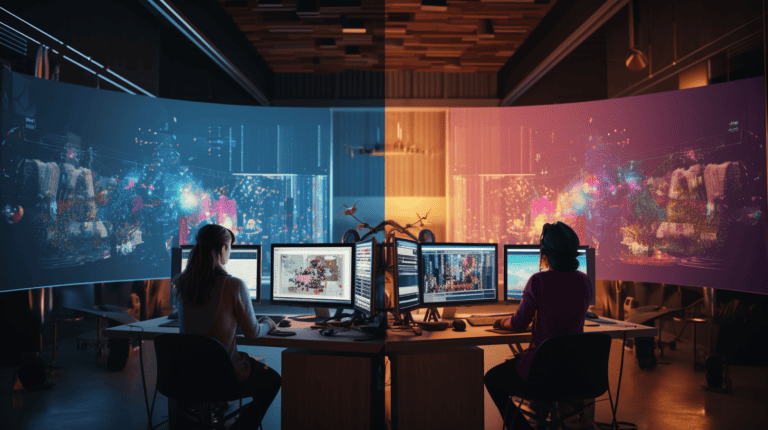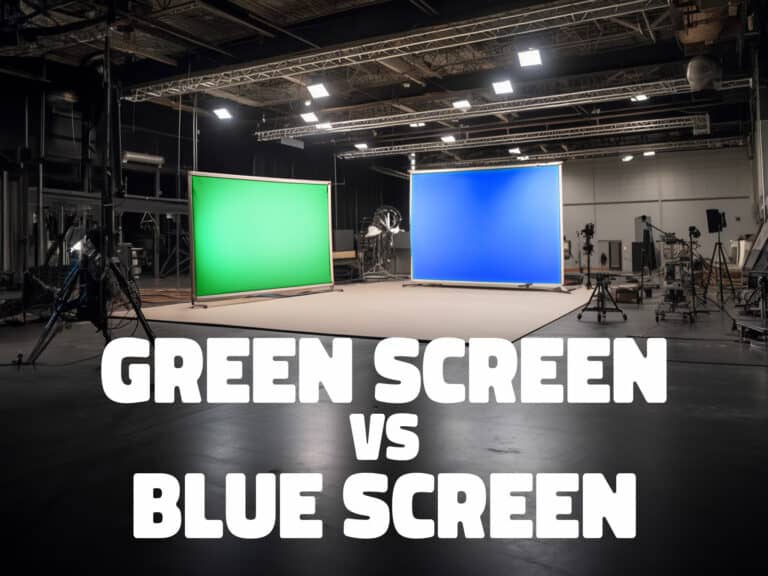The Art and Science of How Visual Effects Are Made
Do you ever wonder how those mind-blowing visual effects in movies and TV shows are created?
Get ready to dive into the captivating world of visual effects and uncover the secrets behind their art and science.
In this article, we’ll take you on an exhilarating journey through the history, process, and challenges of creating visual effects.
Prepare to be amazed as we explore the iconic visual effects that have left a lasting impact on the world of entertainment.
Let’s begin!
Key Takeaways
- Visual effects manipulate and enhance images and videos using digital manipulation and CGI.
- Visual effects enhance storytelling, create believable worlds, and add excitement and spectacle to films and shows.
- Milestones in visual effects technology include the invention of the green screen, computer-generated 3D wireframe models, and motion capture.
- Visual effects artists possess a unique set of skills and expertise, blending artistic vision with technical aspects.
Introduction to Visual Effects
Visual effects, also known as VFX, are the magical elements that bring imagination to life on the big screen. From creating fantastical creatures to building entire worlds, visual effects play a vital role in enhancing the storytelling experience in film and television.
Without them, the awe-inspiring moments that captivate and transport us would simply not be possible.
Definition of Visual Effects
When it comes to understanding the world of visual effects, it’s important to grasp the definition and introduction of this captivating field. Visual effects, often abbreviated as VFX, refer to the manipulation and enhancement of images and videos to create realistic or fantastical visuals that can’t be achieved through traditional filmmaking techniques.
Here are four key aspects of visual effects that will give you a deeper understanding of this art form:
- Digital Manipulation: Visual effects involve the use of computer-generated imagery (CGI) to alter and enhance images, allowing filmmakers to create stunning and immersive worlds.
- Special Effects: Visual effects can encompass special effects, such as explosions, fire, and weather, which are added in post-production to make scenes more dynamic and visually impressive.
- Motion Capture: Visual effects utilize motion capture technology to capture the movements of actors or objects, which can then be applied to digital characters or elements for more realistic animation.
- Virtual Environments: Visual effects enable the creation of virtual environments, allowing filmmakers to transport audiences to fantastical worlds or recreate historical settings with incredible detail.
Importance of Visual Effects in Film and Television
To truly appreciate the captivating world of visual effects, it is crucial to recognize the significant role they play in shaping the impact and immersive experience of film and television. Visual effects have revolutionized the way stories are told on screen, allowing filmmakers to create stunning and realistic visuals that were once unimaginable. From breathtaking landscapes to fantastical creatures, visual effects can transport audiences to new worlds and bring stories to life in ways that were previously only limited by imagination.
Here is a table that highlights the importance of visual effects in film and television:
| Importance of Visual Effects |
|---|
| Enhances storytelling |
| Creates believable worlds |
| Adds excitement and spectacle |
Visual effects not only enhance storytelling by providing visual cues and enhancing emotions, but they also create believable worlds that transport viewers to different times, places, and dimensions. Additionally, visual effects add excitement and spectacle to films and television shows, captivating audiences and leaving a lasting impact.
With the understanding of the importance of visual effects, let’s delve into the fascinating history of how they have evolved over the years.
The History of Visual Effects
Get ready to embark on a journey through time, exploring the fascinating history of visual effects.
From the early beginnings of visual effects in the early 20th century to the groundbreaking milestones in visual effects technology, you’ll discover how this art form has evolved and shaped the world of cinema.
Early Beginnings of Visual Effects
Start by exploring the origins of visual effects, tracing back to the early days of filmmaking. In the early 1900s, filmmakers began experimenting with techniques to create illusions on screen. Here are four key developments that laid the foundation for visual effects as we know them today:
- The use of double exposure: Filmmakers discovered that by exposing the same film multiple times, they could create the illusion of one person interacting with their own doppelgänger.
- Miniature models: Filmmakers started using small-scale models to create realistic-looking landscapes and buildings, allowing them to depict scenes that would be too costly or dangerous to film in real life.
- Matte painting: Artists would paint detailed backgrounds on glass panels and then combine them with live-action footage, giving the illusion of vast, realistic environments.
- Stop-motion animation: By meticulously moving objects frame by frame, filmmakers could bring inanimate objects to life, creating fantastical creatures and otherworldly beings.
These early advancements set the stage for the remarkable milestones in visual effects technology that would come later.
Milestones in Visual Effects Technology
As you delve into the history of visual effects, you’ll discover significant milestones that have shaped the technology behind creating stunning visual illusions. From the early days of practical effects to the groundbreaking advancements of CGI, these milestones have pushed the boundaries of what’s possible in the world of visual storytelling.
One such milestone is the invention of the green screen in the 1940s, which allowed filmmakers to seamlessly blend live-action footage with computer-generated imagery.
Another pivotal moment came in the 1970s with the creation of the first computer-generated 3D wireframe model, revolutionizing the way visual effects were created.
And let’s not forget about the advent of motion capture technology in the 1980s, which allowed for more realistic and nuanced character animations.
Each of these milestones has played a crucial role in shaping the visual effects industry into what it’s today, constantly pushing the boundaries of imagination and innovation.
The Role of Visual Effects Artists
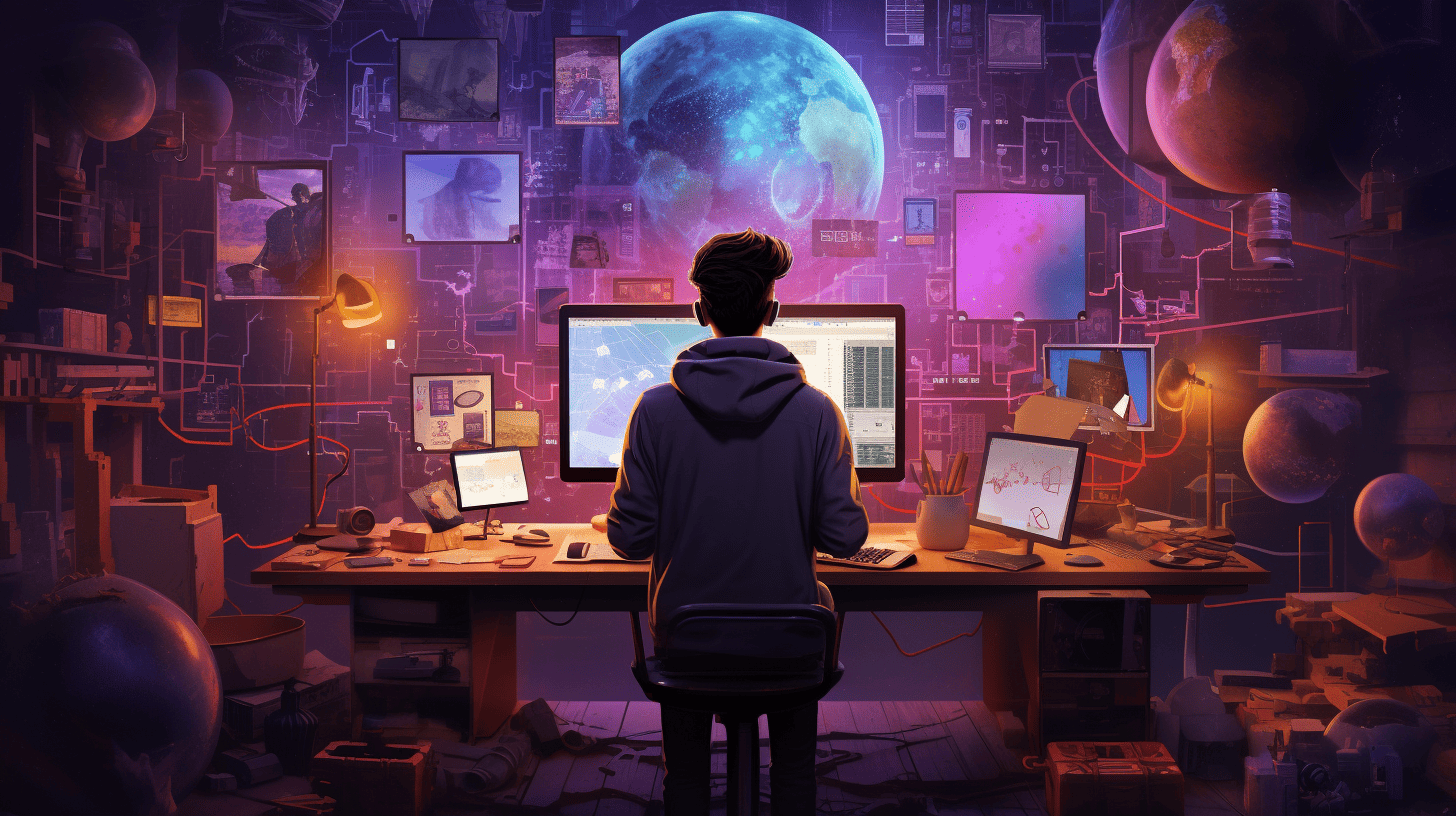
As a visual effects artist, you possess a unique set of skills and expertise that are crucial to the creation of mind-blowing visual effects. Your ability to seamlessly blend your artistic vision with the technical aspects of the craft is what sets you apart.
But it’s not just about your individual talent – collaboration with filmmakers and the production team is essential to bring their vision to life. Together, you have the power to create awe-inspiring worlds and push the boundaries of what’s possible on the screen.
Skills and Expertise Required
To become a successful visual effects artist, you need a combination of technical skills, artistic talent, and a deep understanding of the industry. Here are four key skills and expertise required to excel in this field:
- Proficiency in software: As a visual effects artist, you must be adept at using industry-standard software such as Maya, Nuke, and Adobe After Effects. Mastery of these tools allows you to bring your creative vision to life.
- Attention to detail: Visual effects require meticulous attention to detail. You must be able to analyze and replicate real-world elements accurately, ensuring that the visual effects seamlessly blend into the live-action footage.
- Problem-solving abilities: Visual effects often present complex challenges. Being able to troubleshoot technical issues and find creative solutions is crucial in delivering high-quality effects.
- Collaboration skills: Visual effects artists work closely with filmmakers and production teams. Effective communication and collaboration skills are essential for understanding their vision and integrating the effects seamlessly into the overall project.
With these skills and expertise, you can contribute to the collaborative process of bringing filmmakers’ visions to life through visual effects.
Collaboration with Filmmakers and Production Team
Collaborating closely with filmmakers and the production team, visual effects artists play a vital role in bringing their creative vision to life through the seamless integration of visual effects. By working hand in hand with directors, cinematographers, and production designers, VFX artists ensure that the visual effects seamlessly blend with the live-action footage, enhancing the story and creating a truly immersive experience for the audience.
In order to achieve this level of collaboration, VFX artists must possess a deep understanding of the filmmaker’s vision and objectives. This requires effective communication skills and the ability to translate their technical expertise into artistic decisions that align with the overall aesthetic and narrative of the film.
Here is a table showcasing the key aspects of collaboration between visual effects artists and the production team:
| Aspects of Collaboration | Importance |
|---|---|
| Clear communication | Essential |
| Creative problem-solving | Crucial |
| Attention to detail | Vital |
Clear communication is essential to ensure that everyone is on the same page and working towards the same goal. Creative problem-solving is crucial when dealing with complex visual effects challenges that may arise during production. Attention to detail is vital to ensure that the visual effects seamlessly integrate with the live-action footage, maintaining the film’s authenticity.
Collaboration between visual effects artists and the production team is a delicate dance, where technical expertise meets artistic vision. It is through this partnership that the magic of visual effects comes to life on the big screen.
The Process of Creating Visual Effects
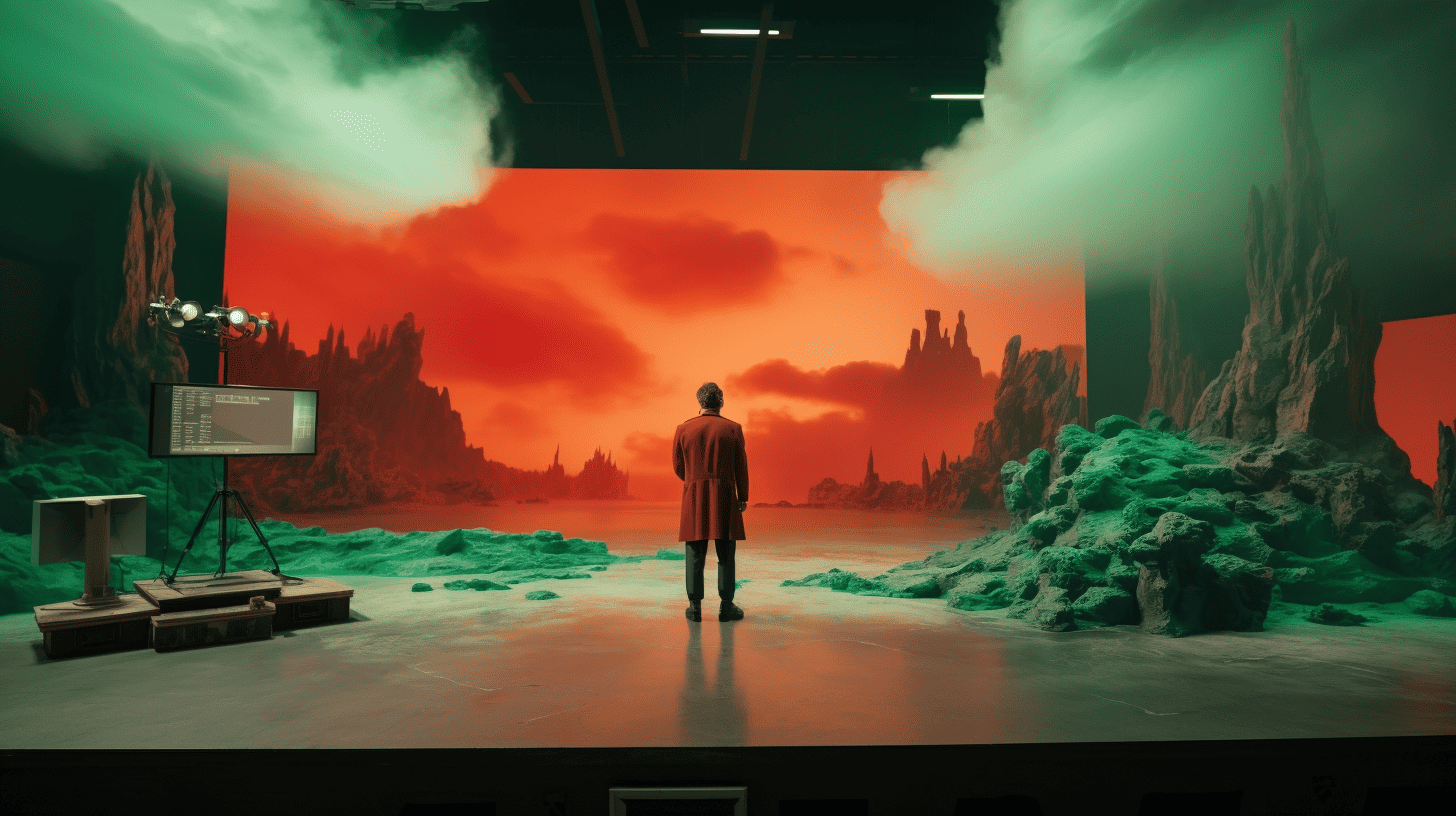
So, you want to know how visual effects are created?
Well, it all starts with careful pre-production planning and conceptualization. This is where ideas are brainstormed, storyboards are created, and a clear vision is established.
Then, during the on-set acquisition of visual elements, various techniques are used to capture the necessary footage, whether it’s through green screen technology or practical effects.
Pre-production Planning and Conceptualization
During the pre-production phase, you’ll dive into the intricate process of planning and conceptualizing visual effects for your project. This crucial step sets the foundation for the stunning visuals that will captivate your audience.
Here are four key aspects to consider during pre-production planning:
- Script Analysis: Understanding the story and its visual requirements is essential. Analyze the script to identify scenes that require visual effects and brainstorm creative solutions to bring them to life.
- Collaboration: Visual effects involve teamwork. Collaborate with directors, producers, and other stakeholders to ensure everyone is on the same page and the visual effects align with the project’s vision.
- Budgeting and Scheduling: Plan the visual effects within the constraints of time and budget. Allocate resources wisely and set realistic timelines to avoid any delays or unexpected expenses.
- Concept Art and Storyboarding: Visualize your ideas through concept art and storyboarding. These tools help communicate your vision to the team and ensure everyone is working towards a shared goal.
On-set Acquisition of Visual Elements
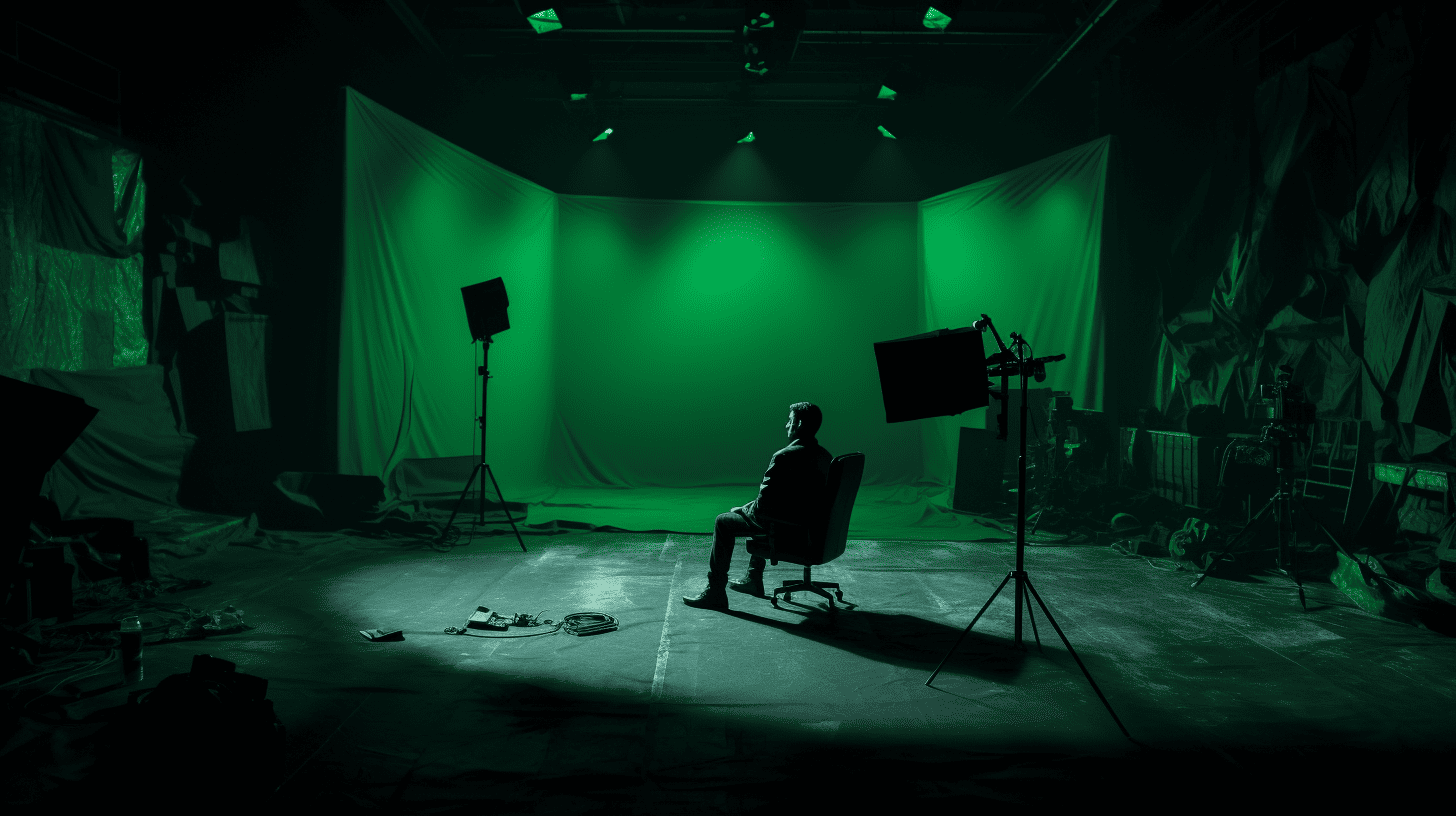
How can you capture the visual elements needed for creating visual effects on set? It requires a combination of careful planning, skilled execution, and the use of specialized equipment. On-set acquisition of visual elements involves capturing footage, images, and data that will later be manipulated and enhanced in post-production. This process is crucial for seamlessly integrating visual effects into the final product. To achieve this, various techniques and tools are employed, such as:
| Technique | Description |
|---|---|
| Green screen | Using a green screen allows for easy removal of backgrounds. |
| Motion capture | Capturing actors’ movements for realistic animation. |
| 3D scanning | Creating digital models of real objects or people. |
Post-production Techniques and Tools
To seamlessly integrate visual effects into the final product, you’ll need to utilize various post-production techniques and tools. Here are four essential elements of the process:
- Compositing: This technique involves combining multiple visual elements, such as live-action footage and computer-generated imagery (CGI), to create a seamless and cohesive final image.
- Color grading: By manipulating the colors and tones of the footage, color grading helps establish the desired mood and atmosphere, enhancing the overall visual impact.
- Motion tracking: To seamlessly integrate CGI elements into live-action footage, motion tracking allows for accurate placement and movement of virtual objects in relation to the camera movement.
- Visual effects software: These powerful tools, such as Adobe After Effects and Nuke, provide the necessary tools and capabilities to create and manipulate visual effects elements with precision and efficiency.
Types of Visual Effects
Now let’s explore the fascinating world of visual effects and the different types that exist.
Have you ever wondered about the distinction between practical effects and digital effects?
Or perhaps you’ve heard the terms special effects and visual effects and wondered what sets them apart?
Finally, we’ll delve into the commonly used techniques that bring these visual wonders to life, leaving you in awe of the artistry and skill behind them.
Get ready to have your mind blown by the incredible world of visual effects.
Practical Effects vs. Digital Effects
When creating visual effects, you often have to choose between practical effects and digital effects. Both options have their advantages and limitations, so it’s important to consider which approach best suits your project. Here are four key points to help you understand the differences between practical and digital effects:
- Realism:
Practical effects involve physical elements that interact with the actors and the environment, creating a tangible and realistic feel. On the other hand, digital effects allow for more flexibility and can create stunningly realistic visuals that would be impossible to achieve practically.
- Cost and Time:
Practical effects often require elaborate setups, props, and equipment, which can be expensive and time-consuming. Digital effects, while still requiring skilled artists and technology, can be more cost-effective and offer faster turnaround times.
- Safety and Practicality:
Some effects, such as explosions or dangerous stunts, may be too risky or impractical to achieve practically. Digital effects can provide a safer and more controlled environment for these types of sequences.
- Creative Freedom:
Digital effects offer endless possibilities for creating fantastical worlds, creatures, and phenomena that would be impossible to achieve practically. They allow filmmakers to push the boundaries of imagination and bring their vision to life.
In the end, the choice between practical effects and digital effects depends on the specific requirements and goals of your project. It’s essential to find the right balance and use the most appropriate techniques to enhance your storytelling and captivate your audience.
Special Effects vs. Visual Effects
You can distinguish between special effects and visual effects by understanding their respective roles in creating on-screen magic.
Special effects refer to the physical and practical elements that are captured on camera during filming. These effects can include explosions, stunts, prosthetics, and animatronics.
On the other hand, visual effects are created digitally and added to the footage in post-production. They involve manipulating and enhancing the images using computer-generated imagery (CGI). Visual effects can bring imaginary creatures to life, create realistic environments, and even alter the laws of physics.
From breathtaking action sequences to fantastical worlds, both special effects and visual effects play a crucial role in transporting audiences to extraordinary realms and pushing the boundaries of what’s possible on screen.
Commonly Used Visual Effects Techniques
To understand the different types of visual effects, it’s important to explore the commonly used techniques in creating on-screen magic. Here are four techniques that are frequently employed by visual effects artists:
- CGI (Computer-Generated Imagery): This technique involves the use of computer software to create realistic and seamless visual effects. It allows artists to bring to life imaginary creatures, stunning landscapes, and mind-bending physics.
- Green Screen: This technique involves filming actors against a green or blue background and then replacing that background with a different setting or environment during post-production. It’s commonly used for creating futuristic or otherworldly scenes.
- Motion Capture: This technique involves recording the movements of actors or objects using special sensors or cameras. The captured data is then used to animate digital characters or objects, resulting in realistic and lifelike movements.
- Practical Effects: This technique involves creating visual effects using physical props, models, or makeup. It’s often used alongside digital effects to enhance realism and create a more immersive experience.
Visual Effects in Different Film Genres
Are you ready to explore the exciting world of visual effects in different film genres?
Action and adventure films often utilize visual effects to enhance thrilling chase scenes and explosive stunts.
Science fiction and fantasy films transport audiences to imaginative worlds with the help of stunning visual effects.
And in historical and period films, visual effects can recreate historical events and settings with remarkable accuracy.
Get ready to dive into the fascinating ways visual effects bring these genres to life on the big screen.
Action and Adventure Films
Action and adventure films utilize visual effects to enhance the thrilling and immersive experience for viewers. These effects play a crucial role in bringing larger-than-life action sequences and breathtaking stunts to the big screen.
Here are four ways visual effects are used in action and adventure films:
- Explosions and destruction: Visual effects artists create realistic explosions and destruction, adding intensity and excitement to action scenes.
- Superhuman abilities: Visual effects bring to life the extraordinary powers of superheroes and action heroes, allowing them to perform incredible feats.
- Epic landscapes: From exotic locations to fantastical worlds, visual effects transport audiences to breathtaking and visually stunning environments.
- Death-defying stunts: Visual effects help create dangerous and thrilling stunts that would be impossible or too risky to perform in reality.
As we move into the next section about science fiction and fantasy films, the use of visual effects continues to push the boundaries of imagination and awe.
Science Fiction and Fantasy Films
As we delve into the realm of science fiction and fantasy films, visual effects continue to elevate the imagination and captivate audiences with their awe-inspiring creations. These genres provide filmmakers with the opportunity to push the boundaries of reality and transport us to fantastical worlds beyond our wildest dreams.
From breathtaking interstellar battles and mind-bending time travel sequences to mythical creatures and magical powers, visual effects play a crucial role in bringing these extraordinary stories to life. With advancements in technology, filmmakers can now create visually stunning landscapes, intricate creatures, and epic battles that immerse viewers in a world that was once only imaginable.
As we watch these films, we aren’t just passive observers, but active participants in the fantastical adventures that unfold before our eyes.
Historical and Period Films
Explore the intricate artistry and technical mastery behind visual effects in historical and period films.
- Recreating Historical Settings: Visual effects allow filmmakers to transport audiences to different eras, bringing to life ancient civilizations, medieval castles, and grand palaces with stunning accuracy.
- Enhancing Authenticity: Visual effects can enhance the authenticity of historical films by adding details that may be difficult or impossible to recreate physically, such as realistic battle sequences or accurate depictions of famous landmarks.
- Seamless Integration: Visual effects seamlessly blend real-world locations with digital elements, creating a cohesive visual experience. This integration allows for the creation of realistic crowd scenes, massive battles, and awe-inspiring landscapes.
- Preserving Historical Accuracy: Visual effects can help filmmakers accurately depict historical events or people, ensuring that the story remains true to its time period while still captivating modern audiences.
As we delve into the challenges and limitations of visual effects, it’s important to recognize the immense contribution they’ve made in bringing historical and period films to life.
Challenges and Limitations in Visual Effects
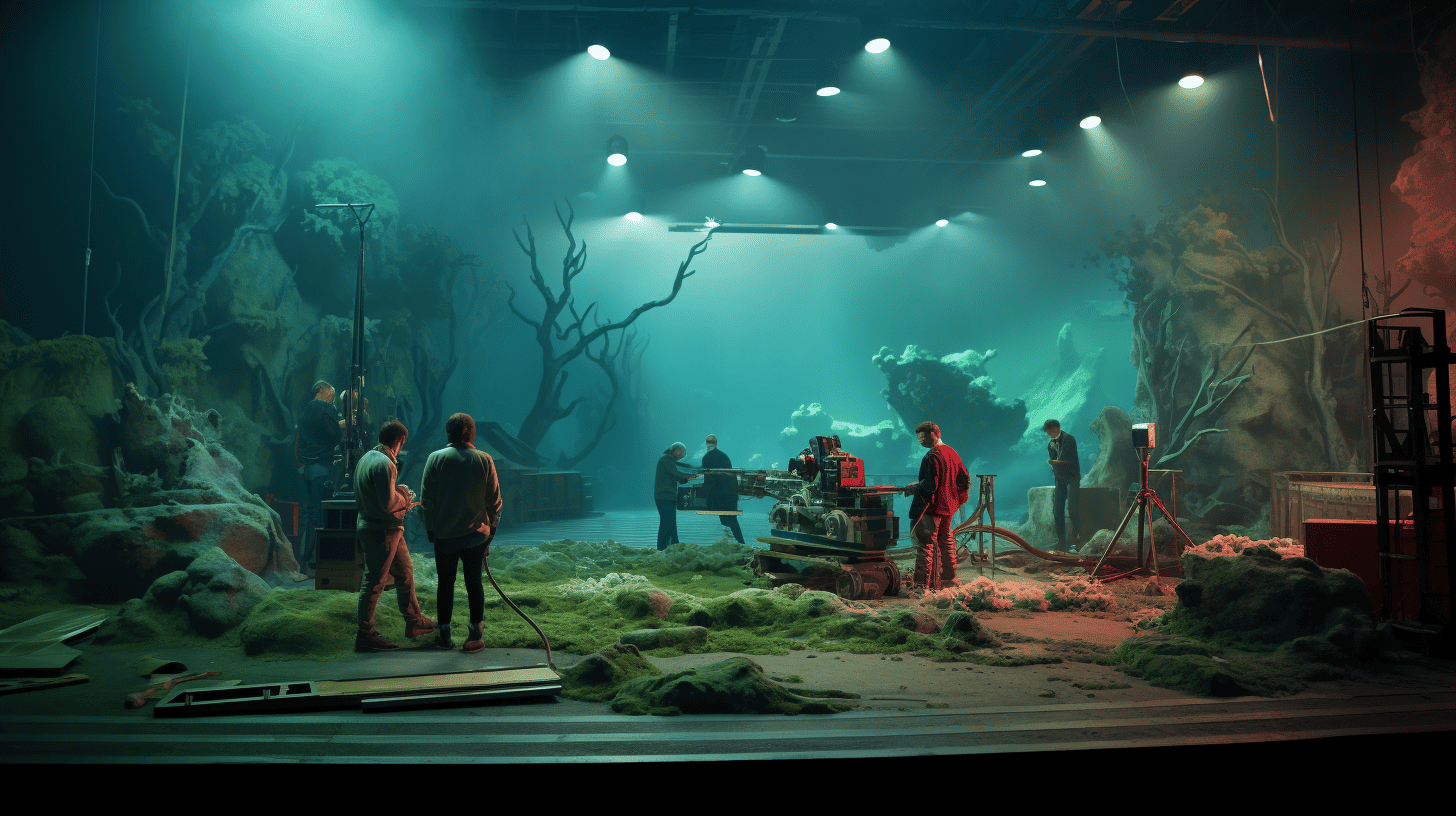
When it comes to creating visual effects, you face several challenges and limitations.
First, there’s the constant pursuit of realism and believability, as audiences have high expectations for seamless integration of effects into the story.
Second, there are budget and time constraints, which can limit the resources available for creating complex and detailed effects.
Lastly, there are technical limitations and advancements to consider, as new techniques and technologies constantly emerge, pushing the boundaries of what’s possible in visual effects.
Realism and Believability
To achieve realism and believability in visual effects, you need to go beyond simply creating impressive visuals. It requires careful attention to detail and an understanding of how people perceive and interpret the world around them. Here are four key factors to consider:
- Lighting: Proper lighting is essential for creating a realistic environment. It affects the mood, depth, and overall atmosphere of a scene.
- Textures: Paying attention to the textures of objects and surfaces can enhance the visual realism. From the smoothness of a glass surface to the roughness of a brick wall, textures help create a sense of tangibility.
- Physics: Realistic physics simulations can make objects move and interact with each other in a believable way. Gravity, momentum, and collisions all play a role in creating a convincing visual experience.
- Attention to detail: The little things matter. From the way light reflects off a shiny surface to the small imperfections in textures, attention to detail can make a big difference in the overall realism of a visual effect.
Budget and Time Constraints
Achieving realism and believability in visual effects isn’t without its challenges and limitations, particularly when it comes to budget and time constraints. These constraints can greatly impact the quality and complexity of visual effects in a film or production. Limited budgets may require cutting corners, using cheaper software or equipment, or relying on less experienced artists. This can result in less polished and realistic effects.
Similarly, tight deadlines can put pressure on artists and technicians, forcing them to rush the process and potentially sacrifice attention to detail. Time constraints can also limit the number of iterations and revisions, making it harder to achieve the desired level of realism.
Despite these challenges, skilled artists and creative problem-solving can still produce impressive visual effects within the limitations.
Technical Limitations and Advancements
Despite budget and time constraints, you can still create impressive visual effects by navigating the challenges of technical limitations and staying up to date with advancements in the field. Here are four key things to consider:
- Hardware limitations: The power of your computer and the available software can heavily impact what you can achieve. Investing in high-performance hardware and keeping your software up to date is crucial.
- Realism vs. artistic freedom: Balancing the desire for realistic effects with the creative vision of the project can be a challenge. Striking the right balance is key to creating visually stunning visuals.
- Collaboration and communication: Working effectively with a team of artists, technicians, and directors is essential. Clear communication and understanding of each other’s expertise can help overcome technical hurdles.
- Continuous learning and adaptation: The field of visual effects is constantly evolving. Staying updated with the latest advancements, techniques, and tools is vital to push the boundaries of what can be achieved.
By addressing these challenges and embracing advancements, you can create groundbreaking visual effects that captivate audiences.
Now, let’s delve into some case studies of iconic visual effects.
Case Studies of Iconic Visual Effects
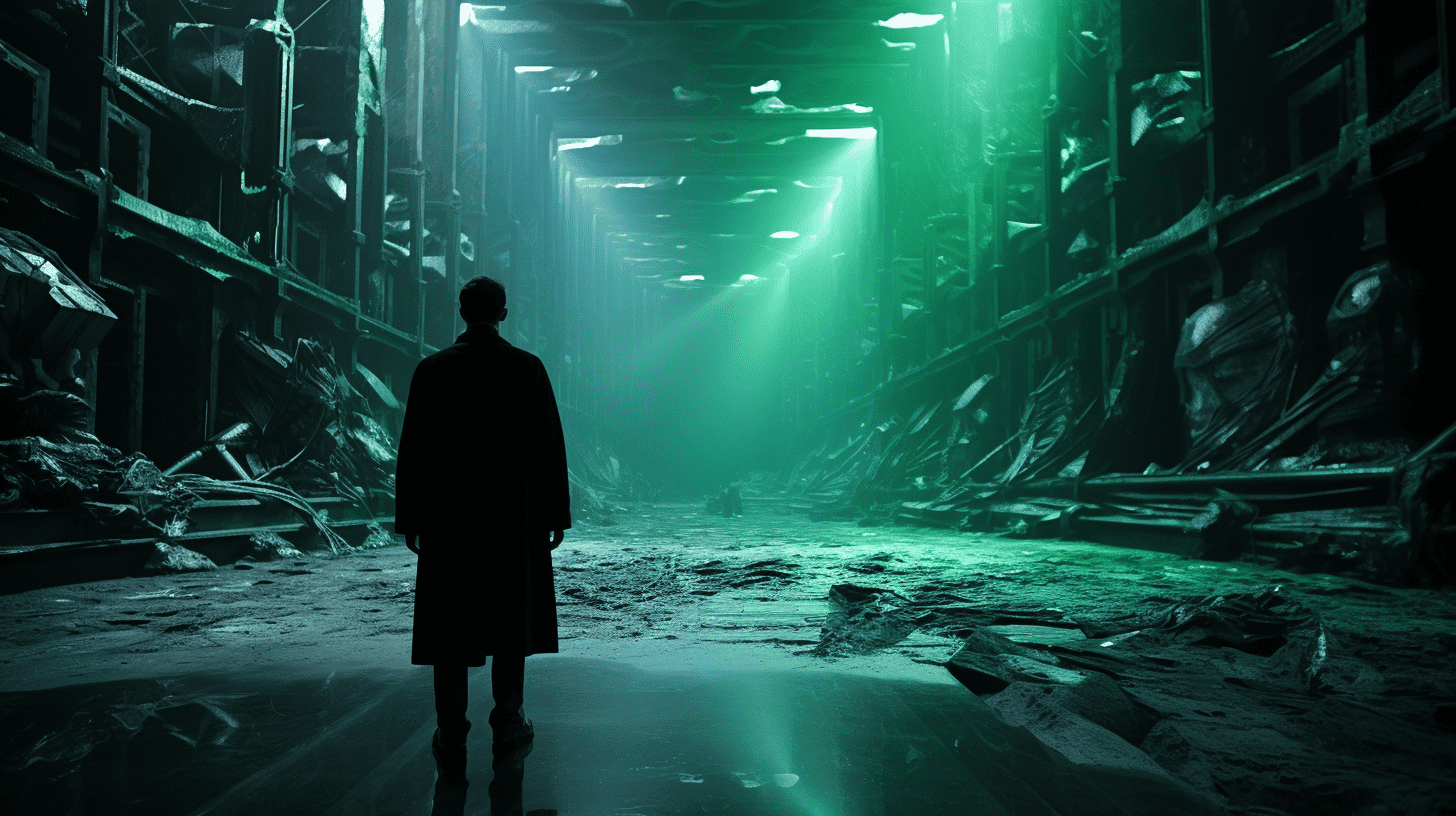
Now let’s take a closer look at some iconic visual effects that have captivated audiences over the years.
From the mind-bending bullet-time sequences in The Matrix Trilogy to the breathtakingly realistic dinosaurs of Jurassic Park, and the immersive world of Pandora in Avatar, these films have pushed the boundaries of what’s possible in visual effects.
Each of these case studies offers a unique glimpse into the artistry and technical wizardry behind creating unforgettable moments on the big screen.
The Matrix Trilogy
To fully appreciate the groundbreaking visual effects in the Matrix Trilogy, you must understand the meticulous planning and execution that went into each iconic scene. The Matrix Trilogy pushed the boundaries of visual effects in filmmaking, leaving audiences in awe of its innovative techniques. Here are four key elements that made the visual effects in the Matrix Trilogy so memorable:
- Bullet Time: The Matrix introduced the world to the concept of bullet time, a technique that allowed the camera to move around a frozen moment in time. This created a surreal and visually stunning effect that became synonymous with the franchise.
- Wire Work: The Matrix Trilogy revolutionized wire work in action sequences. Actors were suspended on wires, enabling them to perform gravity-defying stunts and moves, adding a sense of dynamic realism to the fight scenes.
- Virtual Cinematography: The use of virtual cinematography in the Matrix Trilogy allowed filmmakers to create digital environments that seamlessly blended with live-action footage. This gave birth to the iconic ‘Matrix code’ and the simulated world of the Matrix itself.
- Digital Doubles: The Matrix Trilogy utilized digital doubles to enhance and augment the performances of the actors. These digital replicas were used in complex action scenes, enabling the characters to perform incredible feats that would have been impossible otherwise.
The visual effects in the Matrix Trilogy pushed the boundaries of what was thought possible, forever changing the landscape of filmmaking.
Jurassic Park
The groundbreaking visual effects in the Matrix Trilogy set the stage for further exploration in the realm of visual effects. One prime example of this is Jurassic Park. Released in 1993, Jurassic Park revolutionized the film industry with its seamless integration of computer-generated dinosaurs into live-action footage.
The film’s director, Steven Spielberg, pushed the boundaries of what was possible, combining animatronics with cutting-edge CGI technology. The result was a truly immersive experience that brought these prehistoric creatures to life on the big screen. From the awe-inspiring appearance of the majestic Brachiosaurus to the terrifying chase scene with the ferocious Tyrannosaurus rex, Jurassic Park demonstrated the power of visual effects in creating a believable and thrilling cinematic experience.
Even nearly three decades later, the film’s effects still hold up, serving as a testament to the timeless artistry and innovation of the visual effects team behind Jurassic Park.
Avatar
You will frequently marvel at the iconic visual effects showcased in Avatar, a groundbreaking film that pushed the boundaries of what was possible in the realm of visual storytelling. Here are four reasons why the visual effects in Avatar are truly remarkable:
- Unprecedented realism: The film introduced a new level of photorealism, seamlessly blending live-action footage with computer-generated environments and characters.
- Revolutionary motion capture: Avatar revolutionized motion capture technology, allowing actors to portray the Na’vi characters with unparalleled precision and emotion.
- Immersive 3D experience: The film’s 3D technology transported audiences into the lush and vibrant world of Pandora, creating an unprecedented sense of immersion and depth.
- Attention to detail: Every aspect of the visual effects, from the intricate design of the Na’vi creatures to the breathtaking landscapes, was meticulously crafted, resulting in a visually stunning and awe-inspiring cinematic experience.
Avatar remains a testament to the power of visual effects in storytelling, leaving a lasting impact on the film industry.
The Future of Visual Effects
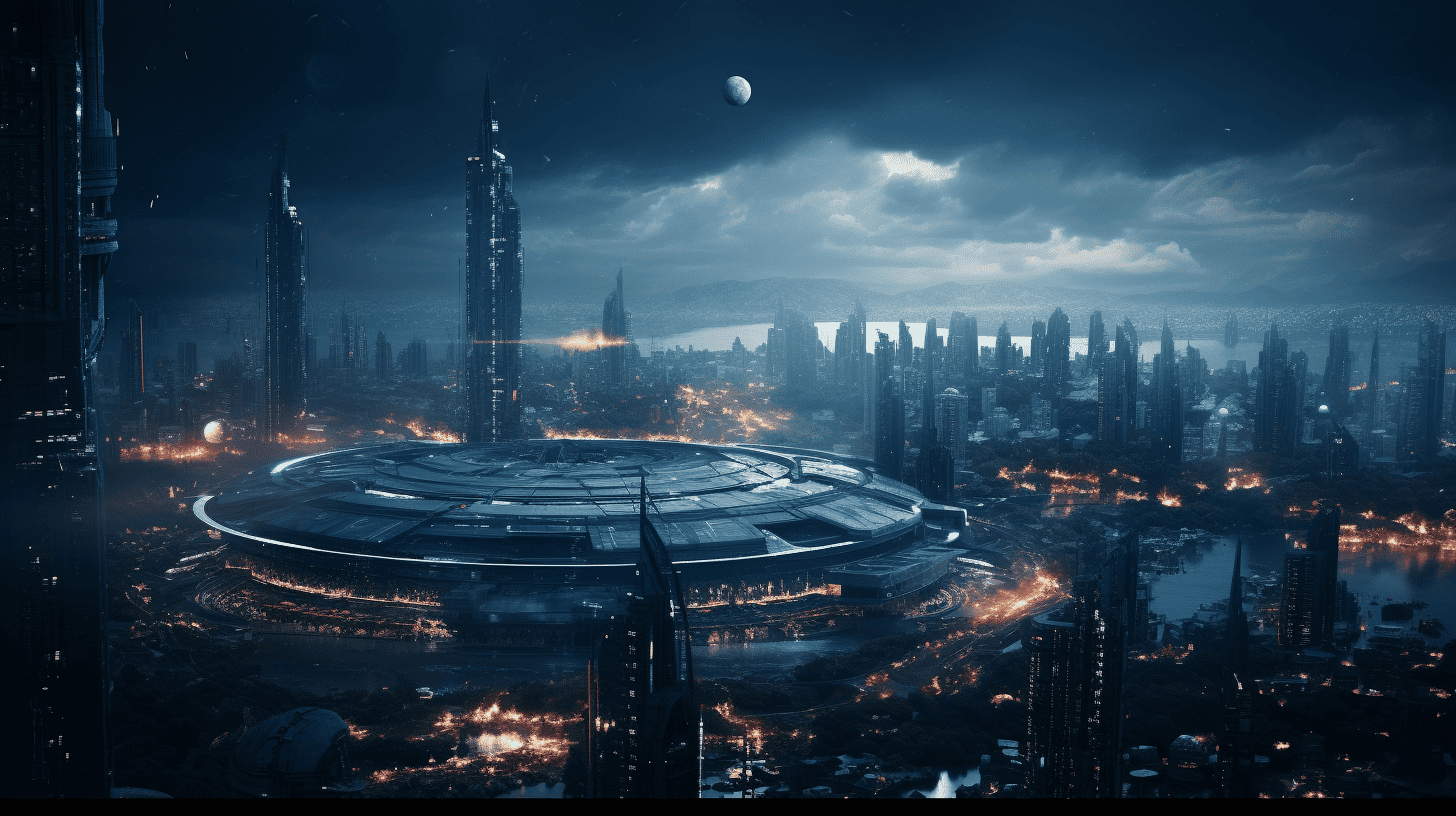
Get ready for a mind-bending revolution in visual effects.
Advancements in technology are pushing the boundaries of what’s possible, with virtual reality and augmented reality poised to transform the way we experience movies and games.
Brace yourself for a future where you can step inside your favorite films, interact with virtual characters, and be transported to unimaginable worlds.
The future of visual effects is here, and it’s going to be a wild ride.
Advancements in Technology
Visual effects are constantly evolving, driven by the rapid advancements in technology’s capabilities. As we look towards the future of visual effects, there are several exciting advancements on the horizon:
- Real-time rendering: With the rise of powerful GPUs and improved algorithms, real-time rendering will become more accessible and efficient. This means that filmmakers can see the final result of their visual effects on set, saving time and allowing for more creative experimentation.
- Artificial intelligence: AI technology is revolutionizing the way visual effects are created. Machine learning algorithms can be trained to understand and replicate complex visual elements, reducing the need for manual labor and speeding up the production process.
- Virtual reality and augmented reality: These technologies aren’t just limited to gaming and entertainment. Visual effects artists are exploring the use of VR and AR to enhance the viewer’s experience, creating immersive and interactive worlds.
- Holographic displays: Imagine watching a movie or a live performance with holographic characters and effects seamlessly integrated into the real world. This technology is rapidly advancing, and soon we may see holographic visual effects becoming a part of our everyday lives.
With these advancements, the future of visual effects is bound to be even more awe-inspiring and immersive. The possibilities are endless, and we can’t wait to see what the next technological breakthrough will bring to the world of visual effects.
Virtual Reality and Augmented Reality in Visual Effects
As we continue exploring advancements in technology, let’s delve into the exciting realm of virtual reality (VR) and augmented reality (AR) in visual effects.
VR and AR have revolutionized the way visual effects are created and experienced, offering a whole new level of immersion and interactivity.
With VR, you can step into a virtual world and interact with it in ways never before possible. Imagine being able to walk through a digitally created environment, touch and manipulate objects, all while being fully immersed in a virtual reality experience.
AR, on the other hand, blends virtual elements with the real world, enhancing our perception of reality. It allows for seamless integration of virtual objects into our everyday lives, opening up endless possibilities for storytelling and creativity.
The future of visual effects lies in the hands of VR and AR, promising to push the boundaries of imagination even further.
Conclusion
As we come to the end of this exploration into the art and science of visual effects, it’s important to recap the significance and influence these effects have had on the entertainment industry.
From transporting us to fantastical worlds to breathing life into imaginary creatures, visual effects have become an integral part of our cinematic experience.
What’s even more fascinating is how these effects continue to evolve and push the boundaries of what’s visually possible, ensuring that the future of visual effects remains an exciting and ever-changing landscape.
Recap of the Importance and Impact of Visual Effects
In understanding the importance and impact of visual effects, you can appreciate the immense artistry and technical skill involved in their creation. Visual effects have revolutionized the entertainment industry, transforming the way stories are told on screen. Here are four reasons why visual effects are significant and influential:
- Enhancing storytelling: Visual effects allow filmmakers to bring their imaginative ideas to life, creating breathtaking worlds and fantastical creatures that captivate audiences.
- Immersive experiences: Visual effects can transport viewers to different time periods, locations, or even entirely fictional realms, providing a truly immersive cinematic experience.
- Pushing boundaries: Visual effects constantly push the limits of what’s visually possible, driving innovation and challenging filmmakers to think outside the box.
- Economic impact: The visual effects industry generates billions of dollars in revenue and provides employment opportunities for thousands of artists and technicians worldwide, contributing to the global economy.
The Ever-evolving Nature of Visual Effects in the Entertainment Industry
Now, let’s delve into the ever-evolving nature of visual effects in the entertainment industry, exploring how they continue to shape and redefine the cinematic experience. Visual effects have come a long way since their inception, revolutionizing the way we perceive movies and television shows. They have become an integral part of the storytelling process, enhancing the narrative and immersing the audience in fantastical worlds. As technology advances, visual effects become increasingly sophisticated, blurring the line between reality and fiction. From seamlessly integrating computer-generated characters into live-action footage to creating breathtaking environments that transport us to distant galaxies, visual effects artists constantly push the boundaries of what is possible. As the demand for more immersive and visually stunning experiences grows, visual effects will undoubtedly continue to evolve and amaze us in ways we can’t even imagine.
| Pros | Cons | Impact |
|---|---|---|
| Enhances storytelling | Can be expensive | Transforms the cinematic experience |
| Pushes the boundaries of creativity | Can overshadow practical effects | Inspires awe and wonder |
| Opens up new possibilities | Requires constant adaptation | Creates job opportunities |
Conclusion
So, next time you watch a movie or TV show and marvel at the incredible visual effects, remember the artistry and science that goes into creating them.
From the early days of practical effects to the cutting-edge technologies of today, visual effects artists have continuously pushed the boundaries of imagination.
As the world of visual effects continues to evolve, who knows what amazing creations await us in the future?
The possibilities are truly limitless.

